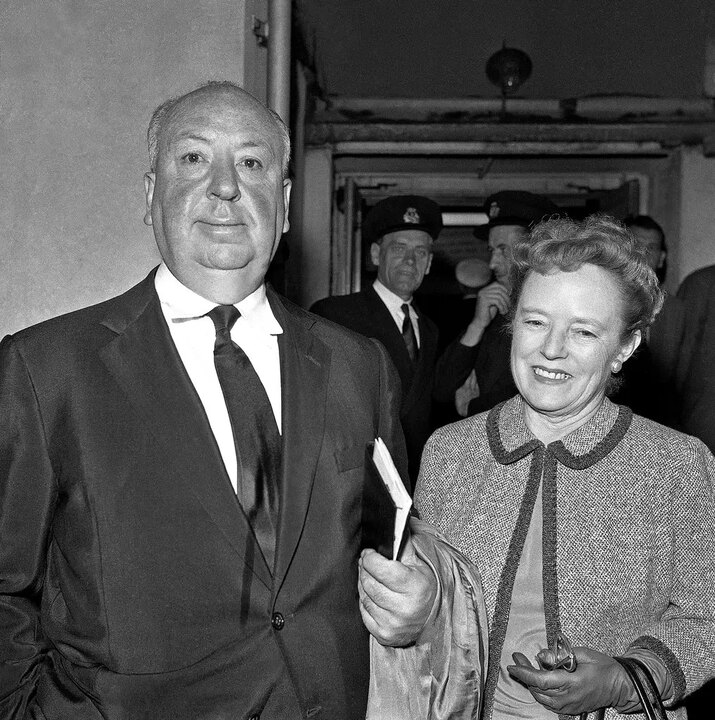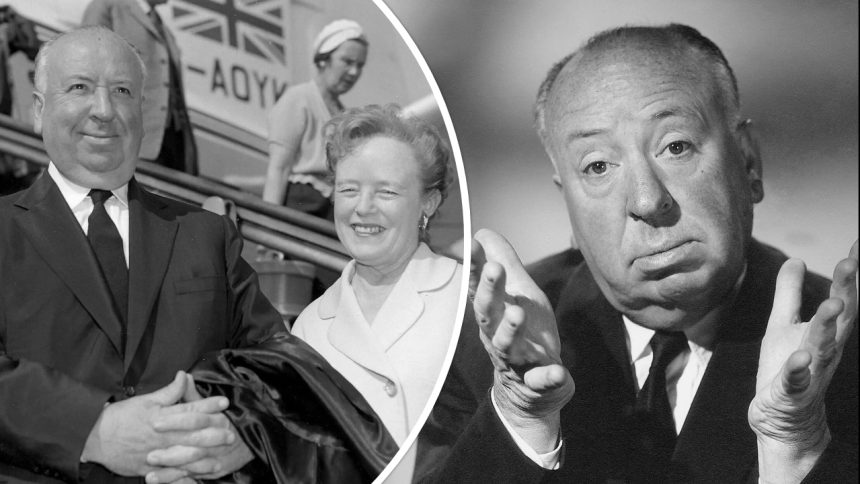If you’ve ever stayed up late binge-watching old thrillers, you know Alfred Hitchcock as that plump, cheeky director who turned everyday fears into cinematic gold. From the shower scene in Psycho that still makes people lock the bathroom door to the dizzying heights in Vertigo, his movies are etched in our brains. But lurking behind those suspenseful plots is a personal puzzle that’s sparked endless chatter: was Hitchcock gay?
It’s a question that pops up because of his quirky personality, some offhand comments he made, and the way he wove subtle sexual undertones into his stories. He lived a pretty buttoned-up life on the surface, married for decades to his collaborator Alma Reville, with whom he built a family and a Hollywood empire. They met in the 1920s when she was a sharp film editor, and their partnership wasn’t just romantic—it fueled his career, with her tweaking scripts and spotting plot holes no one else saw.
Still, whispers about his sexuality persist, fueled by bits from his life that feel like clues in one of his own mysteries. Hitchcock once confided to a friend that without Alma entering his world at just the right moment, he might have swung the other way. Biographers have pored over this, painting him as someone who might have bottled up complex desires, especially given his Catholic upbringing and the era’s stifling attitudes toward anything outside the norm.
You Might Like: Mark Sanchez Net Worth: Inside His $40M Fortune in 2025
He grew up in a strict East London family, the son of a greengrocer, and carried that reserved British vibe his whole life. Yet, he surrounded himself with creative folks who weren’t shy about their orientations, and his films often tiptoed around taboo topics like deviance and hidden passions. It’s like he was always peeking through the keyhole at what society deemed “perverted,” but did that reflect his own inner world?
Hitchcock’s Personal Life and Relationships
Diving deeper into his day-to-day existence, Alfred Hitchcock’s marriage to Alma stands out as rock-solid, lasting from 1926 until his death in 1980. They weren’t the flashy Hollywood couple; instead, they hunkered down in a cozy Surrey farmhouse early on, then moved to California for the movie biz. Alma converted to Catholicism for him, and they had one daughter, Patricia, who later acted in a few of his films, like Strangers on a Train. Family life seemed pretty ordinary—grandkids, holidays, the works. But Hitchcock wasn’t without his quirks; he was infamous for his practical jokes, like sending friends bizarre gifts or staging fake scares, which some folks link to a playful, maybe even flirtatious side.

He hobnobbed with gay artists right from his early days in England, buddies with actor Ivor Novello and his partner, attending their wild parties where the vibe was openly queer. In Hollywood, he collaborated closely with gay writers and actors, like Arthur Laurents on Rope or Farley Granger in multiple flicks. No scandals ever erupted about secret affairs, though—unlike some stars of his time, Hitchcock kept his private life scandal-free, aside from his well-known love for food and booze.
That said, his interactions with women on set tell a different story; he had intense fixations on blonde actresses like Tippi Hedren, whom he reportedly harassed during The Birds and Marnie, isolating her and making unwanted advances. It points to a heterosexual drive, albeit a controlling and problematic one, rather than hidden gay leanings. Biographer Patrick McGilligan summed him up as basically a “normal guy” until health issues kicked in later, while Donald Spoto speculated on repression, but the evidence feels thin, more like reading tea leaves than hard facts.
Queer Themes in His Films
Now, if you really want to geek out on this, look at Alfred Hitchcock’s movies; they’re packed with what folks call “gay coding,” those sly hints that nod to homosexuality without spelling it out, especially under the strict Hays Code that censored everything back then. Take Rope from 1948: it’s based on the real-life Leopold and Loeb case, two gay lovers who committed a thrill kill. Hitchcock cast gay actors John Dall and Farley Granger as the murderers, and the whole thing unfolds like a tense dinner party hiding a body. The subtext is thick—their relationship feels intimate, with post-murder scenes mimicking afterglow, like lighting a cigarette or popping champagne in a way that’s downright suggestive.
Best movie set in one location for the most part?
Alfred Hitchcock’s Rope.
(Based on a play thats based on a true story about a murderous gay couple.) https://t.co/6s4cFH5AUe pic.twitter.com/bddn8tV2RN
— Carlos (@carlosjharris) September 23, 2023
Then there’s Strangers on a Train, where Robert Walker‘s character Bruno comes off as flamboyantly queer, with his mama’s boy antics and obsessive pursuit of Farley Granger’s Guy. It’s all coded through fashion, mannerisms, and that merry-go-round fight that some see as a metaphor for something steamier. Even Rebecca has Judith Anderson‘s Mrs. Danvers as a creepy lesbian housekeeper, fixated on her dead mistress, stroking her lingerie in a scene that’s pure obsession.
Alfred Hitchcock wasn’t anti-gay; he was intrigued by it, using these elements to amp up the unease and explore “deviant” psychology. He drew from Oscar Wilde’s works, reading The Picture of Dorian Gray obsessively as a kid, which influenced his views on perversion and hidden selves. But does that make him gay? Probably not—it seems more like a straight man fascinated by the fringes, channeling his own repressions into art. In the end, the mystery lingers, much like his best twists, leaving us to wonder what secrets he took to the grave.



